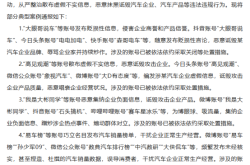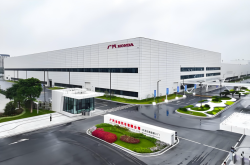Starting from Southeast Asia, Chinese Automakers Accelerate Globalization
![]() 12/30 2024
12/30 2024
![]() 518
518
China is well-positioned to breakthrough in this wave of globalization, potentially nurturing the next generation of world-class automotive brands. Recently, the leaders of China and the ten ASEAN countries announced the substantial conclusion of negotiations for the 3.0 version of the China-ASEAN Free Trade Area, providing new development opportunities for Chinese automakers to enter Southeast Asia.
As Chinese automakers embark on a new era of 'great voyages,' they must not only focus on the 'poetry and distant lands' of developed automotive markets like Europe and the United States but also not overlook the 'backyard' market. In recent years, with the rise of the electrification wave in the automotive industry, Chinese automakers have finally found a breakthrough in exploring Southeast Asia. However, as a 'testing ground' for Chinese automakers going global, the Southeast Asian automotive market is not without risks and challenges. From November 14th to 15th, the 11th Annual Global Chinese Automotive Elite Joint Conference and the 'China Embraces the World' Automotive Industry Innovation Forum were successfully held in Shanghai, with the theme of 'Asian Sparks Illuminate the World.' The forum focused on the practical exploration of automakers entering Southeast Asia, the development prospects of automakers in Asia, and the internationalization experience of Asian automakers, providing insights and reflections for Chinese automakers to go global and deeply cultivate the market worldwide.
Achieving the status of a powerful automotive nation is within reach, and internationalization is a 'must-answer' question.
According to statistics from the China Association of Automobile Manufacturers, from January to October this year, China exported 4.855 million vehicles, a year-on-year increase of 23.8%, continuing to maintain high-speed growth. It is expected that China's automobile exports this year will increase by 600,000 units compared to last year. Behind the continuous breakthrough in China's automobile export scale is the emergence of more and more Chinese brand automakers with core competitiveness on the international stage, indicating the growing strength of China's automotive industry.
"In 2000, the annual conference of the Society of Automotive Engineers (SAE) held in the United States featured a Chinese forum for the first time, and I represented the Chinese team to deliver a speech titled 'Please Do Not Doubt the Chinese Automobile Market.' More than 20 years have passed, and today, facing so many friends returning from overseas, I want to say, 'Please believe that we will soon build an industrial powerhouse.'" Recalling the past and looking to the present, Fu Yuwu, honorary chairman of the Automobile Talent Professional Committee of the China Association for Talent Studies, feels emotional. He stated that after more than 20 years of arduous struggle, China's automotive industry has reached a level of glory unprecedented in world automotive history. Next, we must have strong confidence in realizing the dream of becoming a powerful automotive nation, adhere to innovation, learn from the world's best innovators, embrace more high-tech companies, and expand our circle of friends as soon as possible; adhere to ESG principles, take on social responsibility, value harmonious development with the environment, and create an automotive culture; strengthen industry self-discipline, establish a healthy, orderly, and compliant competition order; firmly embrace reform and opening up, and promote China's automotive industry to truly lead the world with strong industrial soft power.
Zhao Fuquan, FISITA Life Honorary President and Dean of the Institute for Automotive Studies at Tsinghua University, believes that whether from the perspective of automakers' own development needs or from a longer-term internationalization strategy, going global has become a 'must-answer' question rather than an 'optional' one for Chinese automakers. In Zhao's view, the challenges faced by the 'new voyage' are unprecedented. Firstly, automakers must have a long-term strategic mindset, be stable, and have sufficient patience and reverence. Secondly, they must operate with a win-win mindset, act as good local 'corporate citizens,' and fully consider and accommodate local demands. Thirdly, they must abide by business rules and laws, not disorderly 'grab' the pie but rather orderly and collaboratively 'make new and bigger' pies, adhering to both legality and rationality. Additionally, in terms of tactics, focusing on, leveraging, and deeply localizing are the key words. High-quality operations require intensive cultivation and careful planning, avoiding extensive but shallow cultivation and impatience. It is crucial to identify the battlefield, focus resources, expand from point to area, complement internal and external advantages, combine short-term and long-term operations, and identify and maximize China's advantages.
Wang Dazong, Chairman of the Global Automotive Elite Organization, emphasized that China's automotive industry should accelerate its 'going out' pace and deepen its international layout to achieve a complete transformation from exporting complete vehicles to manufacturing and operations overseas, enhancing the localization and competitiveness of Chinese automotive brands overseas. He suggested that when Chinese automakers 'go out,' they should first adhere to a long-term approach of mutual benefit and win-win results, creating a cooperative and win-win industrial chain where 'you have me, and I have you.' Secondly, they should implement a differentiated product strategy, promote the export of plug-in hybrid technology products, and properly handle competition among domestic automakers. Thirdly, they should actively cultivate and introduce automotive talents with an international perspective and cross-cultural communication skills.
Exploring Southeast Asia, Chinese automakers are at the right time.
In the era of 'great voyages,' while focusing on Europe and the United States, Chinese automakers have also begun to place more emphasis on Southeast Asia, which is right in front of them. In the past, relying on the accumulation from the fuel vehicle era, Japanese automakers have long held a monopoly in the Southeast Asian automotive market. However, the wave of automotive electrification has completely changed this landscape.
The most immediate impact is the change in local policy direction. In recent years, to attract foreign investment and promote industrial development, Southeast Asian governments have introduced policies to support the development of new energy vehicles, such as tax exemptions, land incentives, and financing support, to promote local factory construction. For example, Malaysia plans to increase the sales share of electrified vehicles to 15% by 2030 and 38% by 2040, with plans to build 10,000 public charging facilities nationwide by 2025. Thailand aims to achieve carbon neutrality by 2050 and has introduced the '30·30' policy, proposing that 30% of domestically produced cars will be zero-emission vehicles (ZEVs) by 2030, with electric vehicle tax incentives in place.
Zhang Yongwei, Secretary-General of the China EV100, pointed out that currently, China and ASEAN are each other's largest trading partners, so China's electric vehicles have a good foundation for bilateral cooperation by choosing ASEAN as their first stop for going global. Additionally, the ASEAN automotive market is vast and aligns perfectly with the development of China's automotive industry, which is accelerating electrification and has great potential. Relevant countries are also expected to introduce aggressive electrification support policies. Furthermore, the past cooperation between China and ASEAN has basically formed a positive cooperation framework. From January to July this year, China exported nearly 200,000 vehicles to ASEAN, with new energy vehicles accounting for nearly 30%, opening up a trade cooperation pattern.
Wang Junli, the Southeast Asia branch director of the Chinese Association of Automotive Engineers in Japan, is also optimistic about Chinese automakers' path into Southeast Asia. In his view, China is well-positioned to breakthrough in this wave of globalization, potentially nurturing the next generation of world-class automotive brands. Additionally, the recent announcement by the leaders of China and the ten ASEAN countries of the substantial conclusion of negotiations for the 3.0 version of the China-ASEAN Free Trade Area further provides new development opportunities for Chinese automakers to enter Southeast Asia.
With a broader market prospect and cost advantages, establishing factories in Southeast Asia offers significant profit margins and lower trial-and-error costs. For Chinese automakers, the Southeast Asian market, with the above advantages, is expected to be an excellent 'testing ground' for going global: it allows for the accumulation of localization experience, preparing for future factory construction in higher-cost locations such as Europe; it teaches how to manage employees from different cultural backgrounds, laying the foundation for future overseas talent management and avoiding detours.
Going global together, Chinese automakers embrace the world.
For Chinese automakers, Southeast Asia, with its low trial-and-error costs for going global, vast market prospects, and cultural similarity to China, is undoubtedly an optimal choice for overseas layout. It may be a 'blue ocean' that allows for both internationalization testing and stable profitability. However, it is undeniable that risks and challenges also exist in Southeast Asia and cannot be ignored.
Wang Qiang, Sales Director of Automotive Services for the China region at RDI Industrial Technical Services (Shanghai) Co., Ltd., noted that there are significant differences in market development across Asian countries, with fuel vehicles still accounting for the majority of the market share. Regulatory systems for market access also vary among countries. The degree of regulatory implementation in ASEAN countries is inconsistent. Besides the initial adoption of 19 United Nations regulations, national-specific laws and regulations must also be passed to obtain the country's vehicle type approval certificate. He suggested that Chinese automakers achieve sustainable development by enhancing competitiveness, strengthening localized operations, and planning talent layout.
Liu Xiaozhi, FISITA China Ambassador, Executive Vice Chairman of the Global Automotive Elite Organization, and Chairman of Asialong Technology (Shanghai) Co., Ltd., emphasized the need for a step-by-step approach and patience, as going global is not achieved overnight. She suggested that Chinese automakers should learn from multinational automakers, adhere to making quality products, uphold a long-term approach, and follow the principle of adapting to local conditions. When choosing target markets, it is essential to understand local market demands and competitive landscapes, following the model of the lowest global comprehensive cost. For parts enterprises going global, following customers is the safest approach. Liu Xiaozhi pointed out that localized production is a necessity for automakers to establish a long-term presence overseas. Overseas mergers and acquisitions can cross thresholds and restrictions, enabling rapid development of overseas business. Additionally, in the initial stages of going global, it is crucial to send the best employees overseas, unconditionally abide by local laws and regulations, find market-savvy operators, adopt flexible competition models, build mutual trust with customers based on product and technological strength, and attempt to cooperate and win-win with competitors.
Given the long-term 'monopoly' advantage of Japanese brands in the Southeast Asian market, learning from Japanese automakers may be another 'shortcut' for Chinese automakers to explore Southeast Asia. At the conference, Li Ke, a tenured full professor at the School of Business, Nihon University, shared the management experience of Japanese automakers and summarized several key points and insights: Firstly, adhere to quality supremacy, enhance brand image, and strengthen global market competitiveness; secondly, adhere to lean management and cost control, draw on lean production to achieve efficient and low-cost expansion; thirdly, adhere to continuous improvement, establish a feedback and improvement mechanism, and accelerate innovation; fourthly, adhere to team collaboration and cultural construction, promote cross-departmental cooperation, and support intelligent and electric transformation; and fifthly, adhere to globalization and localization strategies to achieve continuous growth through international market expansion and localization.
"The key to building an automotive powerhouse lies in the next ten years. We should adhere to strategic resolve and the development directions of electrification, intelligence, low carbon, and globalization, which are industry consensuses," said Zhu Mingrong, Chairman of the Automobile Talent Professional Committee of the China Association for Talent Studies. The globalization of the automotive industry must progress from product exports to industry exports, encompassing technology and management exports. We must not only learn from the experiences of successful overseas enterprises but also draw lessons from their failures to truly achieve 'China embraces the world.'
Note: This article was originally published in the 'Industry Report' section of the December 2024 issue of 'Auto Review' magazine. Stay tuned.
Image: From the Internet
Article: Auto Review
Typesetting: Auto Review






